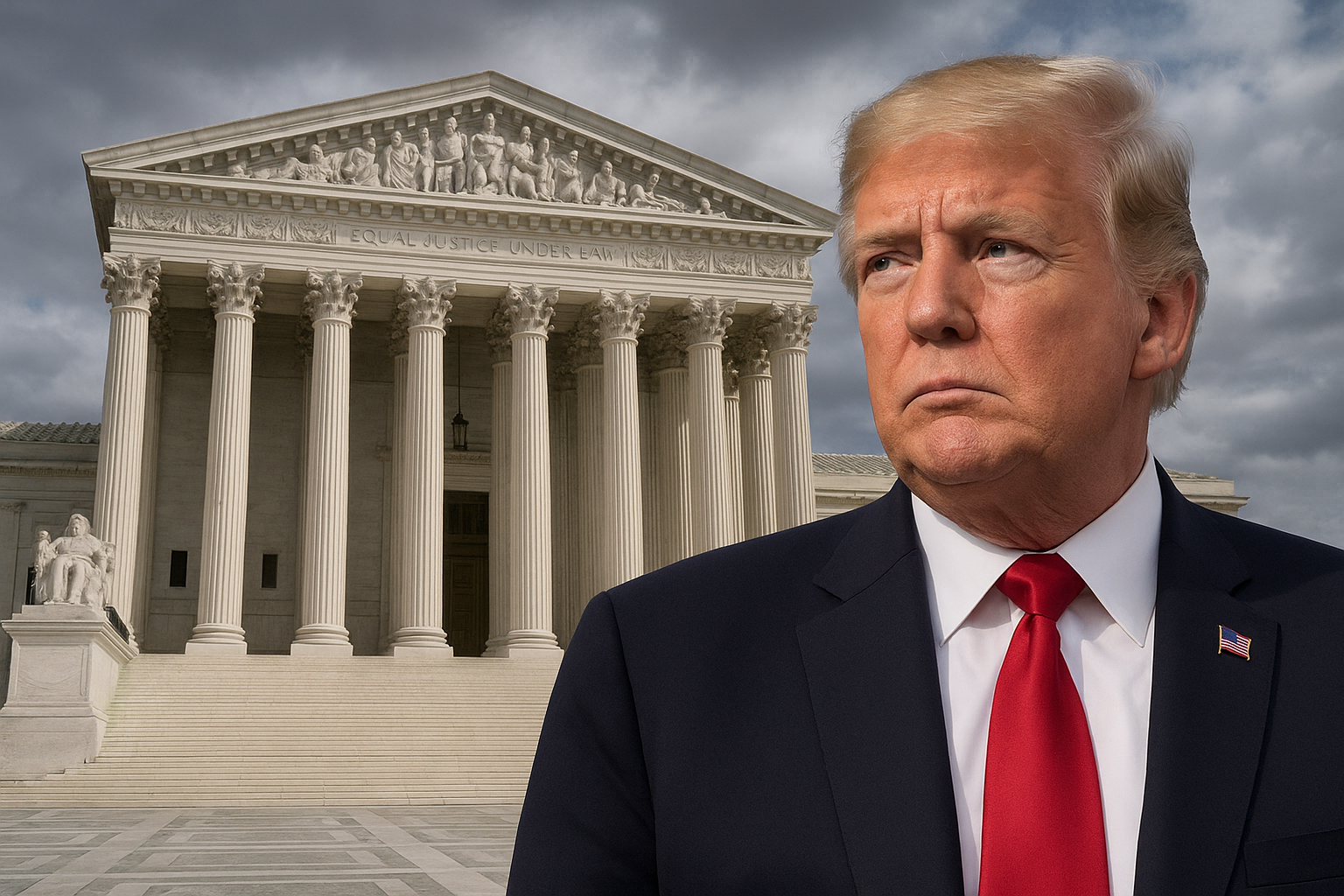As global markets open the week cautiously, all eyes are on Washington. The U.S. Supreme Court is set to hear arguments challenging President Donald Trump’s sweeping global tariff policy, a case that could redefine the balance of power over U.S. trade law — and significantly shape global market sentiment.
The case, reported by the Financial Times and Reuters, centers on whether Trump’s administration exceeded its constitutional authority by imposing broad tariffs on imports from countries including China, the EU, and Canada under the guise of “national security.” The President, who has said he will not attend the hearing, maintains that the tariffs are essential to “protect American jobs and competitiveness.”
But for investors, the implications go far beyond politics — the ruling could determine whether the next phase of U.S. trade policy tilts toward protectionism or renewed global cooperation.
Trade, Policy, and Market Crossroads
Since Trump’s return to office, trade tensions have re-emerged as a dominant market risk factor. His “America First” tariff strategy — which includes universal import duties averaging 10% on most goods and targeted measures on steel, semiconductors, and green technologies — has sparked both support and concern across Wall Street.
According to Bloomberg Economics, the tariffs have added nearly 0.4 percentage points to core U.S. inflation while generating short-term benefits for domestic producers in select manufacturing and energy sectors. Meanwhile, import-heavy industries such as automotive, retail, and electronics have faced increased costs and supply-chain uncertainty.
Global markets have reflected this tension. The S&P 500 has seen sharp rotations between defensive sectors and industrials since the announcement of the “Global Tariff Directive” earlier this year, while the U.S. Dollar Index (DXY) has strengthened on safe-haven demand. In contrast, emerging-market currencies and export-dependent stocks have come under pressure.
Why This Case Matters for Investors
The Supreme Court hearing represents the most significant legal test of presidential trade powers in decades. A ruling against the administration could limit the executive branch’s ability to impose unilateral tariffs without congressional approval, easing global trade-risk uncertainty.
For investors, this outcome would likely trigger a relief rally in equities with international exposure — particularly industrial exporters, tech hardware firms, and logistics providers that have suffered under tariff volatility. It could also strengthen the case for re-engagement in emerging markets, especially those with high U.S. export dependence like Mexico, Vietnam, and South Korea.
Conversely, if the court upholds Trump’s tariff powers, investors could see prolonged market fragmentation and renewed supply-chain reshoring trends. That scenario may benefit domestic U.S. manufacturers, defense contractors, and materials producers, while pressuring multinational corporations and retailers reliant on imported goods.
Policy Uncertainty and Market Reaction
Analysts from Goldman Sachs noted that “policy unpredictability remains the top market concern heading into Q4 2025,” with trade and fiscal policy emerging as the two most significant risk variables.
Bond markets are already pricing in modest risk aversion: U.S. 10-year Treasury yields have fallen 12 basis points over the past week, reflecting investor hedging ahead of the hearing. Meanwhile, equity volatility (VIX) has inched up to 17.8 — still below crisis levels, but signaling caution.
According to Oxford Economics, a full reversal of tariffs could add 0.5% to U.S. GDP growth in 2026, while sustaining the current policy could “erode global growth momentum by up to 0.3%.” That differential underscores just how meaningful this legal decision could be for investor positioning heading into the new year.
Future Trends to Watch
- Global Trade Alliances Realigning: A restrictive ruling may accelerate alternative trade blocs among Asia-Pacific and EU economies, reducing U.S. leverage in global supply chains.
- Reshoring and Industrial Policy: If tariffs stand, expect a continued push for domestic industrial expansion, including new incentives for semiconductor and EV manufacturing.
- Inflation and Monetary Policy Impacts: Tariff persistence would complicate the Federal Reserve’s inflation fight, potentially delaying future rate cuts.
- Political Ripple Effects: The ruling could shape campaign narratives leading into the 2026 midterms, influencing fiscal spending and infrastructure bills.
Key Investment Insight
For investors, this is more than a trade policy headline — it’s a market-defining moment. If the Supreme Court curtails presidential tariff authority, expect cyclical and export-oriented sectors to rebound as supply-chain clarity improves. On the other hand, if Trump retains full trade powers, the era of “deglobalization investing” — emphasizing domestic production, commodities, and defense — could gain renewed momentum.
Investors should remain diversified across trade-sensitive sectors, hedge currency exposure, and monitor developments closely as the court’s ruling could recalibrate global portfolio strategies overnight.
As the balance of power over U.S. trade law hangs in the balance, investors around the world are watching this Supreme Court showdown with heightened attention. Whether it ends in relief or renewed uncertainty, the verdict is poised to reshape not just trade policy — but the trajectory of global markets for years to come.
Stay tuned with MoneyNews.Today for the latest, data-backed insights on policy decisions shaping markets and investor strategy in real time.





